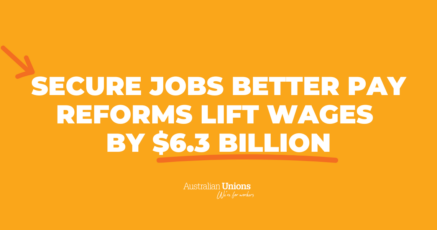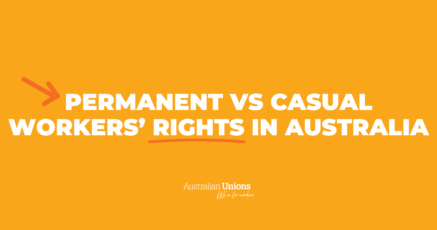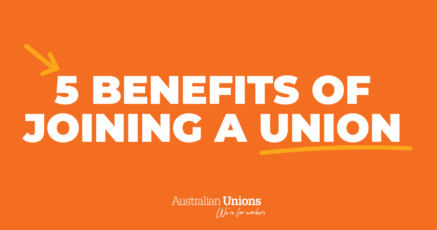To mark International Women’s Day 2021, Australian Unions have released a report into women’s progress and gender equality in Australia and wow, do we need to do better.
Australia was once considered one of the most progressive nations in the world when it came to gender equality, chalking up some early wins women.
In 1902, we were the second country in the world to win the right for some women to vote (it took until 1962 for First Nations women) and we were the first to allow women to stand in Parliament.
Later, came more big wins like the Federal Child Care Act in 1972, the Sex Discrimination Act in 1984 and Australia’s first national paid parental scheme in 2011 – thanks in large part to the campaigns, struggles and strikes of working women.
But when we take a look at the more recent and ongoing issues facing working women in Australia, there seems to be less and less to celebrate.
From pay equity to the impacts of COVID, we need to get real about how much more there is to be done for working women in Australia. Let’s take a look at some key finding in the IWD 2021 Report.
Gender Pay Gap
It’s time to get real about money. More specifically, the money women get paid for the work they do and how it compares to men.
The principle of equal pay for equal work was put in Federal law over 50 years ago, but progress towards closing the gender pay gap has been very slow. So slow, that a gap of 13.4% still exists (when comparing full-time earnings).
That ranks Australia 44th in the world on gender pay disparity. In 2006 we were 15th. So, in 14 years we have slipped how far? We’ll let you do the maths on that one.

Insecure Work
Not only are women getting less pay for equal work, but they are also overrepresented in the insecure workforce.
57% of women workers experienced precariousness in their work pre-COVID. This means women are more likely to be employed in reduced hours or casual and temporary positions than men. Their jobs also often have less predictable hours and fewer entitlements such as sick leave, long service leave and superannuation.
Insecure work also leaves women vulnerable to unsafe work for a range of reasons like inadequate training and induction, and fear of reprisals for speaking out about safety concerns.

Work/Life Collision
Only 15% of Australians, regardless of gender, feel they are able to balance their work and family responsibilities.
Women in casual work with caring responsibilities are often forced into lower paid, less secure work to try and manage this work/life collision. Others have little choice but to drop out of the workforce altogether to manage their unpaid care and domestic work commitments.
Throw in the high cost of childcare in Australia and a lack of guaranteed and secure family-friendly working arrangements and we start to get a clearer picture of the pressures and inequalities many working women are dealing with every day.

Sexual harassment and violence
The recent allegations made regarding rape, bullying and harassment at Parliament House have been a distressing reminder of how urgent this issue is for working women.
Two in three women have been subjected to one or more forms of sexual harassment at work but the complaints process under discrimination laws remains costly, time-consuming and risky.
We need to get real about what is happening and how we can take action to keep women safe at work.
In March 2020, the Sex Discrimination Commissioner released a ground-breaking report, ‘Respect@work’, which found that our laws are failing to keep workers safe and made 55 practical recommendations for reform. But the Government has so far taken no meaningful steps to implement the recommendations. Yep. 0/55.

Impacts of COVID
The inequalities we’ve already talked about existed before the pandemic, but when COVID-19 hit Australia, things got a lot tougher for women.
A mostly female healthcare workforce placed women on the frontlines of the pandemic, and the increase in caring responsibilities during the COVID-19 crisis was largely carried by women.
Social distancing measures also placed women at greater risk of family and domestic violence and women’s overrepresentation in insecure work meant greater job losses in the early stages of the pandemic.
These negative effects were made worse by the exclusion of short-term casuals from JobKeeper, many of whom were women, and the gender blind policy response from the Morrison Government allowing individuals ‘early access’ to their superannuation savings before retirement age.
Women already have significantly lower superannuation balances than men, due to the gender pay gap. Since April, more than 1.7 million women have withdrawn a total of $13 billion from their retirement savings. Over 300,000 of these women have completely emptied their accounts.
Women over 55 were already the fastest growing cohort of homeless Australians, and now face an even greater risk of poverty and homelessness in later life.








SHARE:
It’s time to get real about the issues working women face every day